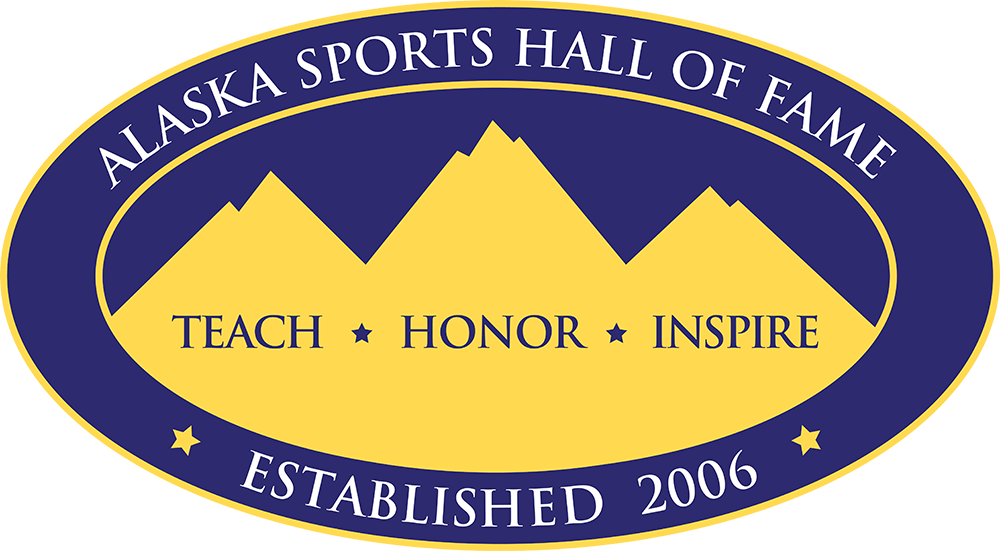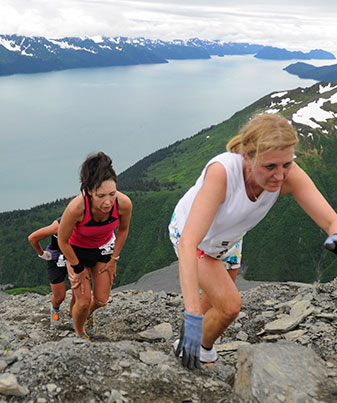Runners in the annual Mount Marathon race, which goes up and down the 3,022-foot slab of pain overlooking Resurrection Bay in Seward, pass an emergency room before their tortuous grind up the mountain and pass it again after their harrowing descent.
At the mountain’s base sits an ambulance. Adjacent to the finish chute downtown is a medical tent.
Countless numbers have left flesh and blood sprinkled among the rocks, cliffs, dirt, shale and scree along the course of three miles-plus in the Fourth of July race that officially began in 1915 .
After being cheered by thousands of fans who swell the small, seaside town to gape at the spectacle, finishers congregate to compare war stories – and wounds. To finish Mount Marathon is victory.
That holds true whether the conquerer is an athlete as sublime as eight-time champion Bill Spencer or nine-time women’s champion Nina Kemppel – both Olympic nordic skiers – or one as seemingly ordinary as a middle-aged mom testing her limits. To win Mount Marathon is to become legend.
Runners like women’s course record-holder Nancy Pease, seven-time champion Cedar Bourgeois and six-time champion Brad Precosky have stamped their greatness on the mountain.
The slog up the beast that averages a 38-degree pitch makes lungs feel like they will explode. The perilous descent makes quadriceps feel like they will implode.
What began as a bar bet in 1909 – is it possible to go up and down the mountain in an hour? – has become the most hyped sporting event in Alaska other than the Iditarod. Each Independence Day, it delivers – drawing hordes of fans and hundreds upon hundreds of hardened athletes.
Fittingly, the race that began as a bar bet finishes next to a bar. Mount Marathon is thirsty work.
– Doyle Woody

